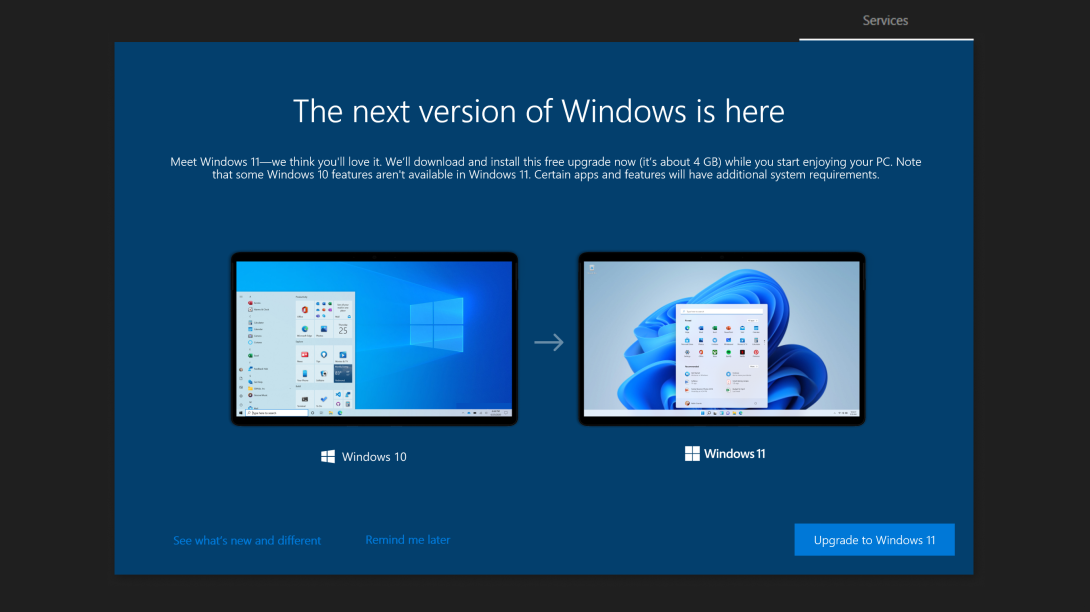Microsoft released the out-of-band update KB5020683 for Windows 10 version 2004 and later that introduces an prompt during the out-of-box (OOBE) experience to update to Windows 11. The update applies to the following Windows 10 versions: 2004, 20H2, 21H1, 21H2 and 22H2.
The update is installed automatically on devices during the Out of Box Experience. During the process, Windows downloads critical driver updates and zero-day patches automatically, if a network connection is available.

Windows 10 administrators see the "The next version of Windows is here" screen during the OOBE process if the device meets certain requirements. First, the OOBE is only displayed if a new version of Windows is available, e.g., if Windows 10 version 22H1 is installed on a device. In that case, Windows 10 version 22H2 is available. The entire process applies only to consumer editions of Windows 10, in this case, Windows 10 Home and Pro.
Windows 11 is only offered during the process if the device is connected to a network during the OOBE process and if the device is compatible with the new operating system. If all three requirements are met, Windows 11 is offered on the device.
The next version of Windows is here screen is displayed at the end of the OOBE process. The screen that is shown displays the upgrade size and screenshots of Windows 10 and 11.
The "upgrade to Windows 11" button is displayed prominently on the screen. As usual, there is no "no thanks" button. Administrators who do not want the device to be upgraded need to select "remind me later" to skip the offer. The upgrade offer to Windows 11 is displayed in the Settings application in that case. There is also a "see what's new and different" link that highlights changes in Windows 11.
Administrators who activate the upgrade button start the process. Windows starts downloading the required Windows 11 files to perform the upgrade on the device. Windows displays a message when the upgrade is ready for installation.
Closing Words
The usage share of Microsoft's Windows 11 operating system is climbing. Statcounter, for instance, recorded a usage share of 16.13% in November 2022 for Windows 11 and a usage share of 69.75% for Windows 10. It is interesting to note that Windows 7's usage share is not far behind the usage share of Windows 11. It was at 10.25% according to Statcounter in November 2022.
The new upgrade offer will certainly improve the usage share of Windows 11. There is still a sizeable number of devices that are not compatible with Windows 11. Microsoft never revealed how many Windows devices are not compatible with Windows 11 though.
Now You: do you use Windows 11 already, or plan to?
Thank you for being a Ghacks reader. The post Windows 10 KB5020683 update displays Windows 11 upgrade prompt appeared first on gHacks Technology News.


0 Commentaires